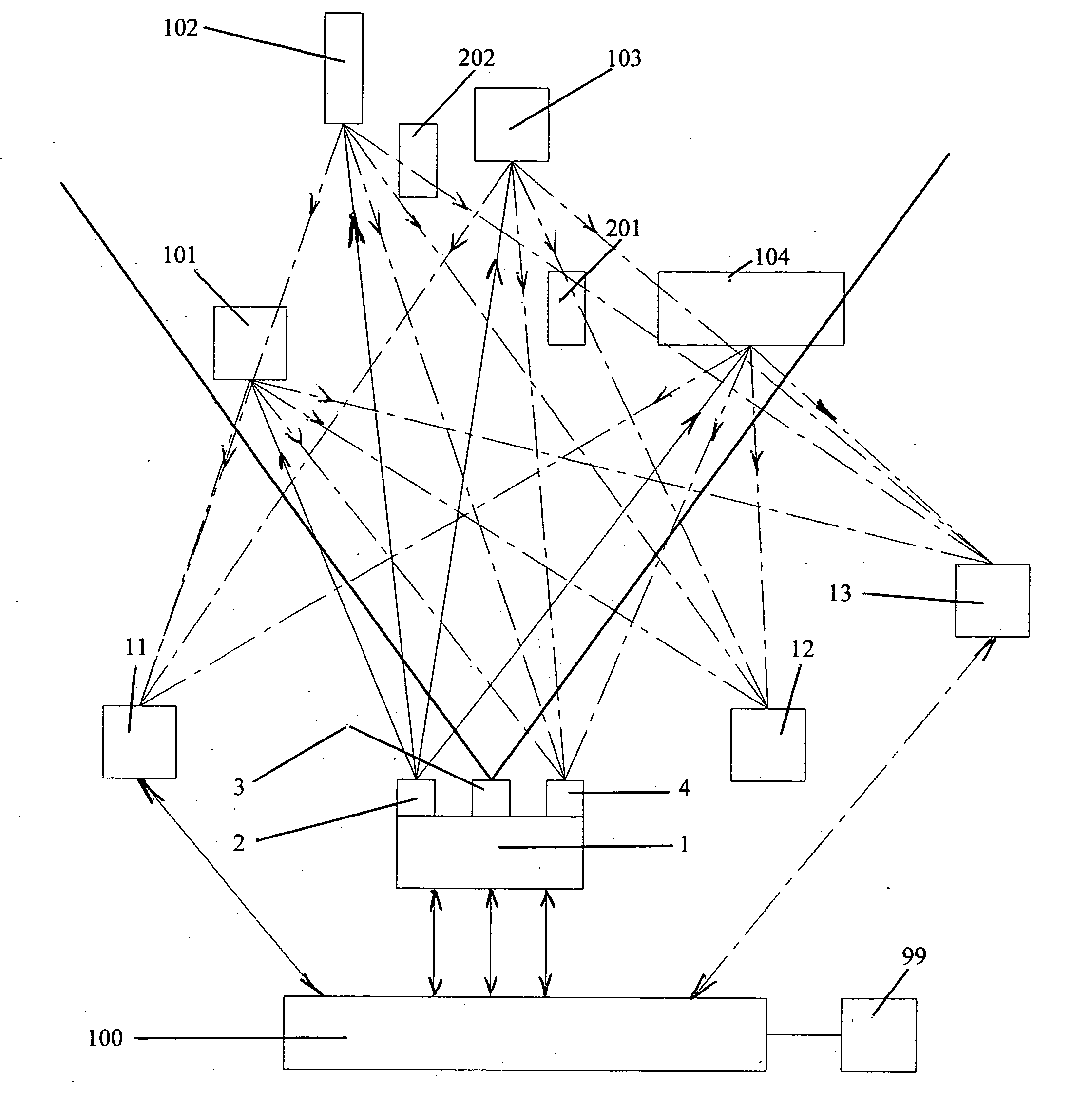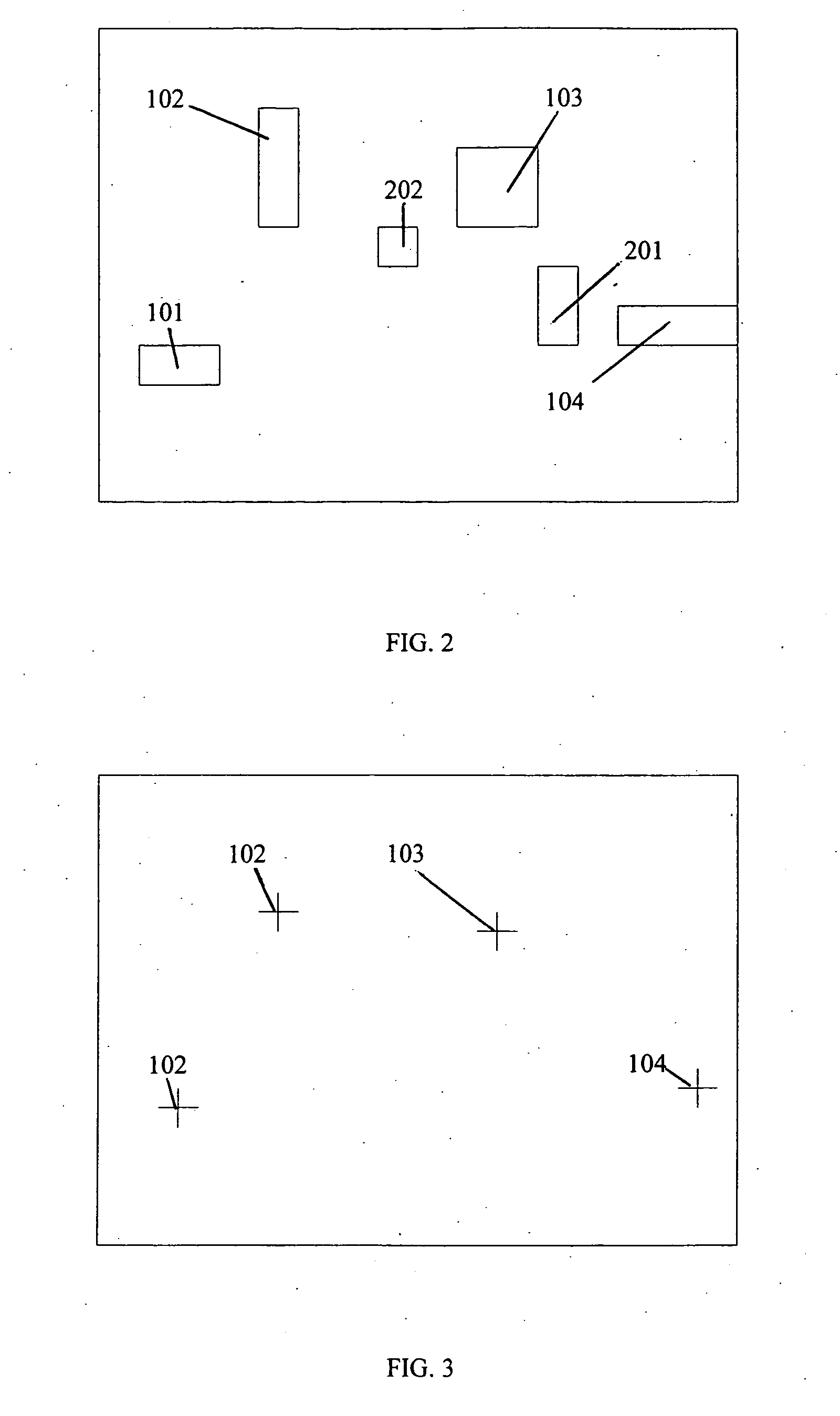Computerized simultaneous laser marking and targeting system
a laser marking and laser marking technology, applied in the field of computerized simultaneous laser marking and targeting system, can solve the problems of label becoming obsolete, method restrictive, label being difficult to read, etc., and achieve the effect of reducing the risk of human error and avoiding wrongful processing
- Summary
- Abstract
- Description
- Claims
- Application Information
AI Technical Summary
Benefits of technology
Problems solved by technology
Method used
Image
Examples
Embodiment Construction
[0015] In all drawings: [0016]1 Simultaneous Laser Targeting equipment (SLT) [0017]2 Simultaneous Laser Targeting Unit (SLTU) [0018]3 Video Camera (VC) [0019]4 Laser Control Camera (LCC) [0020]11, 12, 13—Processing Units (PU) [0021]101, 102, 103, 104—Target Objects (TO) [0022]201, 202—Neutral Objects (NO) [0023]100—Computer [0024]99—Human Machine Interface (HMI) [0025]501—SLTU Controller [0026]511—Laser [0027]512—Laser Control Unit [0028]521—Rotating Mirror [0029]522—Horizontal Servo Motor [0030]523—Vertical Servo Motor [0031]601, 602, 603, 604—Guiding Sensors [0032]605—Selector Sensor
[0033]FIG. 1 is a general view of the application of the invention as a targeting system. From a multitude of objects, 101—104 are selected as target. The rest of the objects -201 and 202—are considered neutral and are not targeted. Targeting is executed by 1, the SLT.
[0034] The simultaneous laser targeting equipment 1 (SLT) has as components the simultaneous laser targeting unit 2 (SLTU), the video ...
PUM
 Login to View More
Login to View More Abstract
Description
Claims
Application Information
 Login to View More
Login to View More - R&D
- Intellectual Property
- Life Sciences
- Materials
- Tech Scout
- Unparalleled Data Quality
- Higher Quality Content
- 60% Fewer Hallucinations
Browse by: Latest US Patents, China's latest patents, Technical Efficacy Thesaurus, Application Domain, Technology Topic, Popular Technical Reports.
© 2025 PatSnap. All rights reserved.Legal|Privacy policy|Modern Slavery Act Transparency Statement|Sitemap|About US| Contact US: help@patsnap.com



